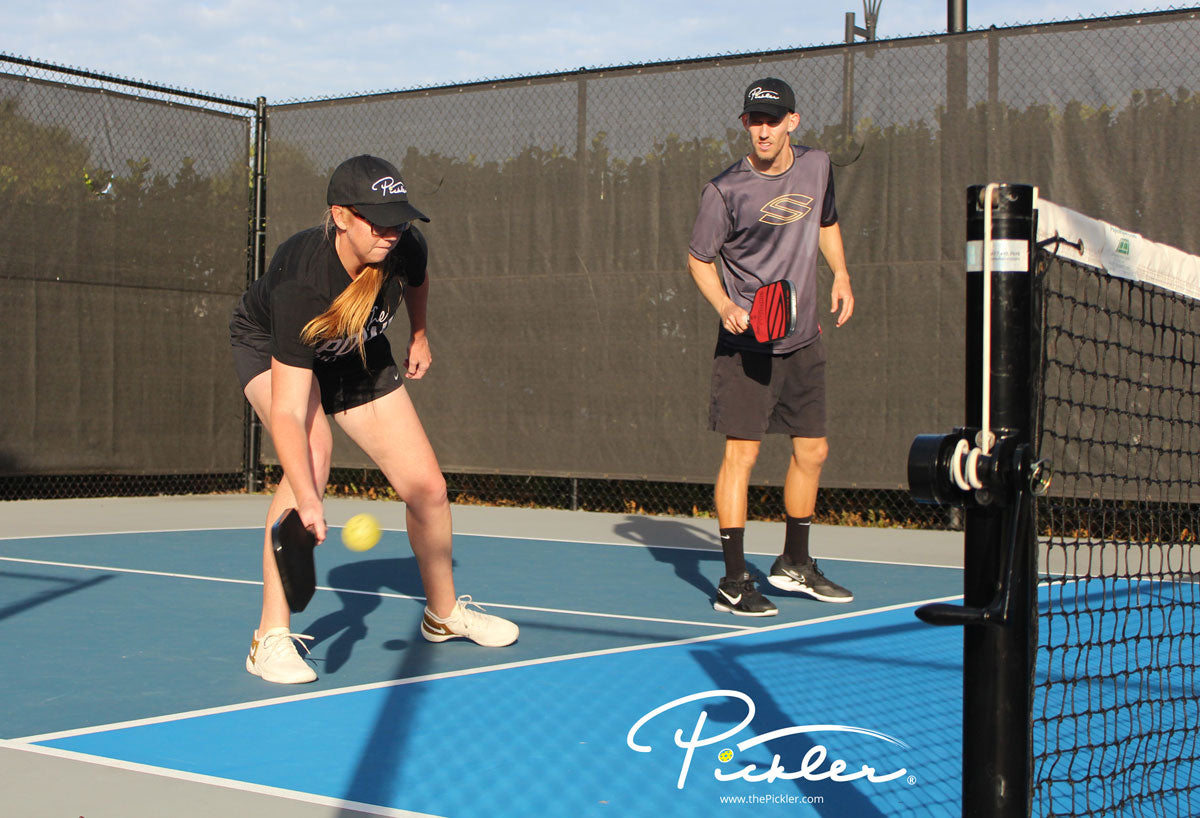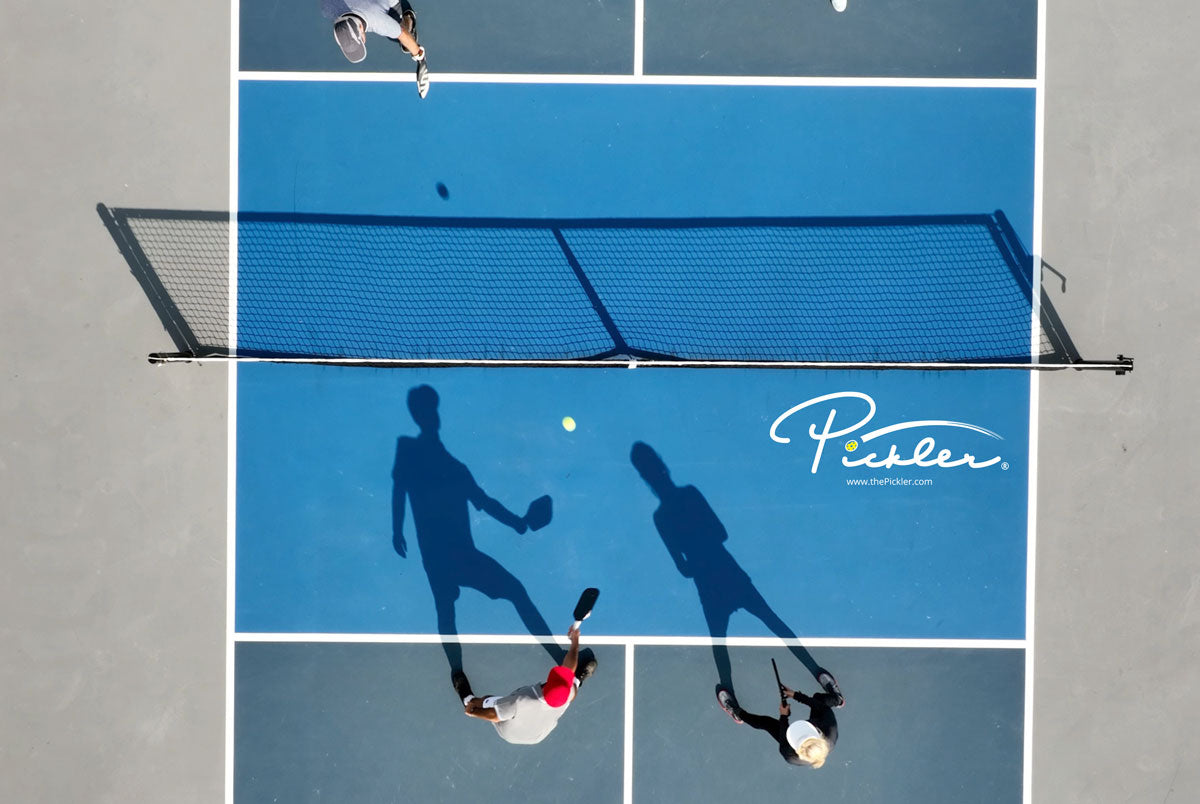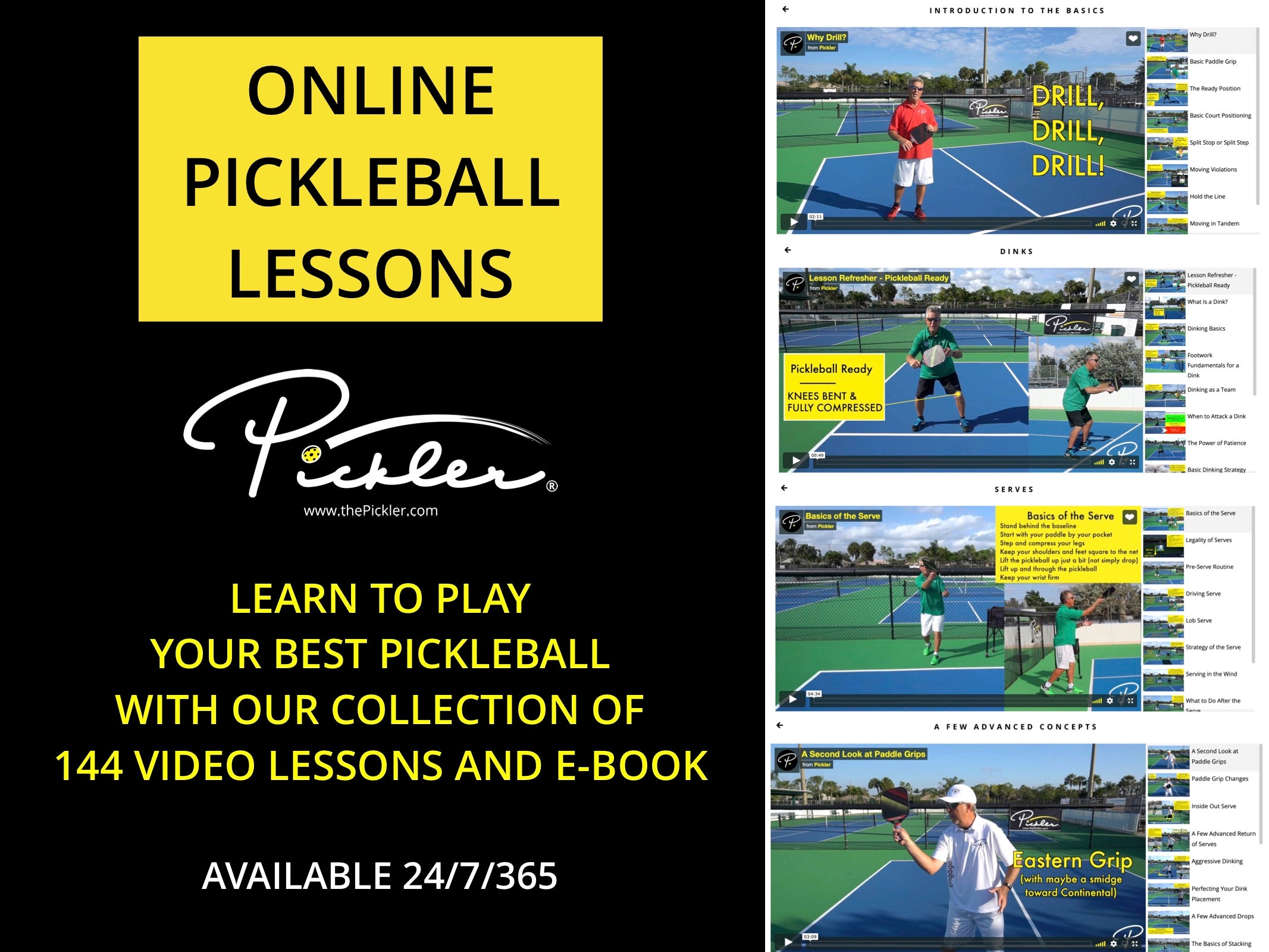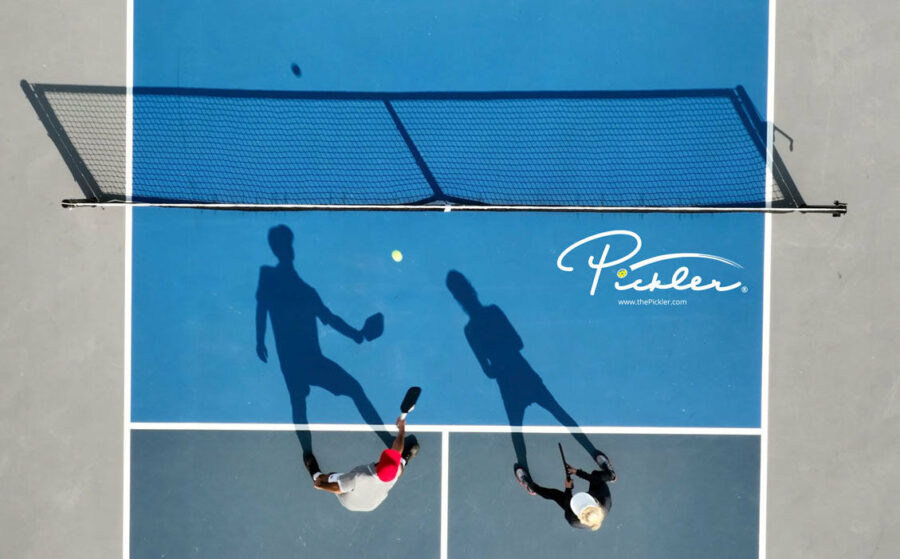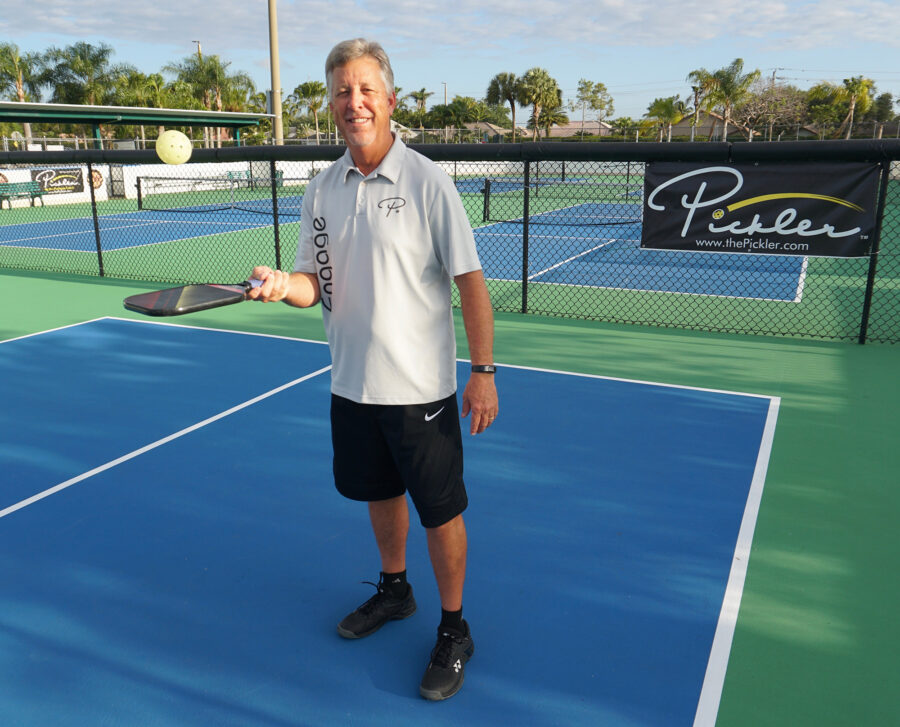Pickleball players generally have an easier time hitting shots when the pickleball stays high above the net. This includes pickleballs that are hit into the air, as well as pickleballs that sit up high after the bounce.
However, not every shot will reach an optimal point of contact. In fact, your opponents are trying to keep the pickleball low and are trying to make your shots as difficult as possible. Sometimes, you can counter the pressure from your opponents with your feet—for instance, by taking a step back, letting the pickleball bounce, and then hitting the pickleball at its apex. However, at other times, you may not be able, or may not want, to do this and you may be forced to hit shots from different heights.
One such scenario where you may be forced to hit the pickleball at a low point of contact is a short-hop dink. And, in fact, this actually be a strong shot selection for you to add to your pickleball arsenal.
What Is a Short-Hop Dink?
A short-hop dink is a dink that is hit just after the pickleball bounces on the court. It is also sometimes referred to as a half-volley dink. Again, it is a dink that is hit just after the bounce, without giving the pickleball time to travel far from the court surface.
Why You Should Master the Short-Hop Dink
In addition to having another tool in your pickleball arsenal to counter your opponents’ shots, there are two primary reasons to master the short-hop dink:
- The short-hop dink enables you to hold the Non-Volley Zone line when a pickleball travels at or near your feet (as opposed to taking a step back off of the Kitchen line and hitting the pickleball off of the bounce). This is critical as you are able to keep a more aggressive court positioning and reduce your opponents’ time to react to your shot.
- The short-hop dink allows you to cut down on the effects of any spin or other “action” on your opponents’ dink. This is because you are cutting off the trajectory of the pickleball, rather than letting the pickleball bounce and continue to travel. This prevents any funny bounces and cuts down on the effects of your opponents’ spin, as you are hitting the pickleball quickly off of the bounce.
In other words, short-hop dinks allow you to cut down on your opponents’ time to react, as well as cut down on your potential errors at the Kitchen line.
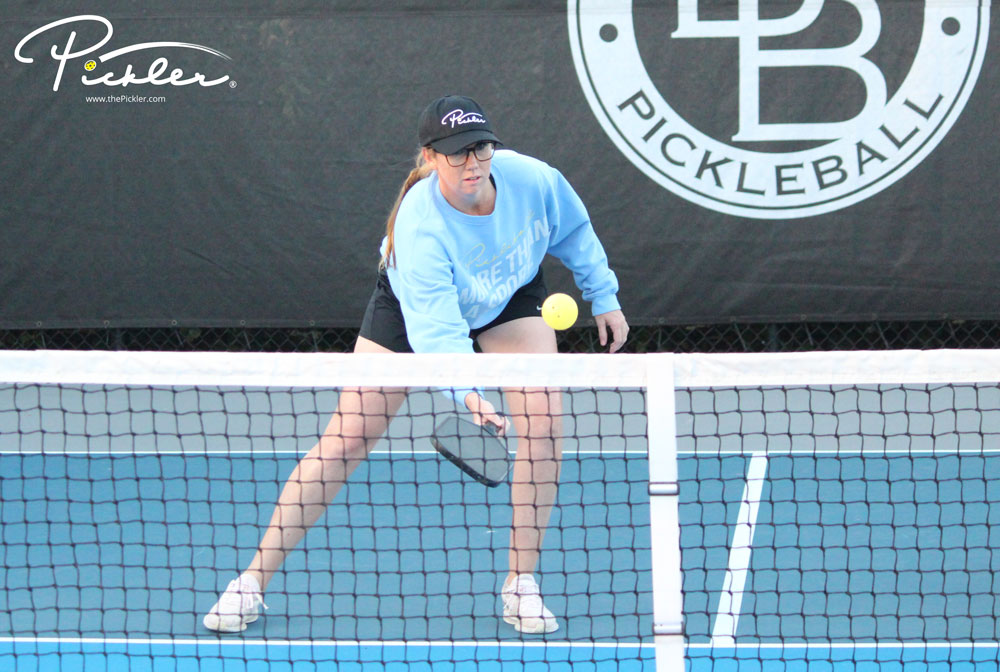
How to Short-Hop Dink
Hitting a strong short-hop dink is a lot like hitting a strong dink, with a few differences:
-
Prepare Your Body and Paddle – To prepare your body:
- Compress into an athletic stance, with your knees bent and your feet about shoulder width apart. This will be even more important with a short-hop dink, as your point of contact will be lower to the court surface;
- Keep your pickleball paddle out front of your body, low to the court surface, and with a relatively loose paddle grip; and
- Be sure to take a short, compact backswing with your short-hop dink. The short-hop dink is more about being a “backboard” for the dink and lifting through the pickleball (more on this below!).
- Watch the Pickleball – This one goes without saying, but, too often, players mishit a pickleball simply because they do not watch the pickleball all the way to their paddle. Watch the pickleball!
- Move Your Feet – When short-hop dinking, it is easy to become static at the Kitchen line, as one benefit to hitting short-hop dinks is that you can hold the Kitchen line and avoid having too much movement. However, it is still important to move your feet, so be conscious of where your feet are and be sure to take small steps to react to the pickleball.
- Hold the Line – Again, the benefit of a short-hop dink is that you can hold the Non-Volley Zone line and take time away from your opponents, so be sure to keep your feet at the Kitchen line.
- Focus on Your Paddle Angle – With a short-hop dink, focus on your point of contact and your paddle angle. Your point of contact should be out in front of your body (but not too far out in front that you are overextended). You will have the most control and most consistency out in front of your body. Also, focus on your paddle angle. With a short-hop dink, you are almost trapping the pickleball near the court surface and allowing the pickleball to do all of the work (as you will have little to no backswing). As a result, it is important to pay attention to your paddle angle. The face of your paddle will determine where the pickleball will go (including how high the pickleball will go). The more your paddle is open to the sun, the higher trajectory the pickleball will travel, and vice versa. Work on your paddle angle to master your short-hop trajectory.
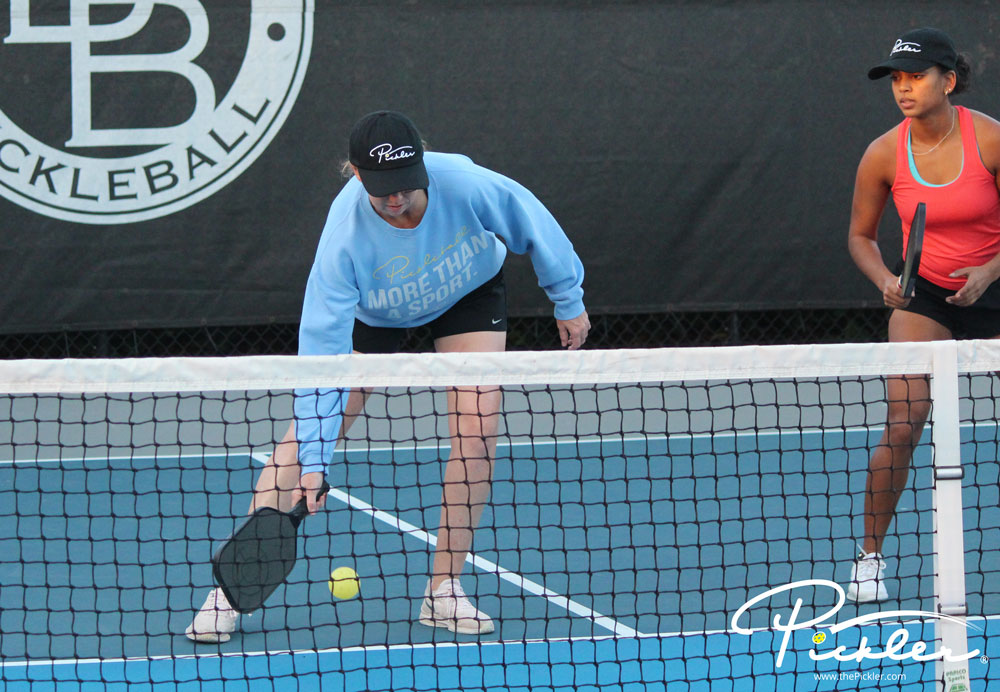
- Gently Lift Through the Pickleball – Once you strike the pickleball for a short-hop dink, gently lift up and through the pickleball. The lift comes from your shoulder, rather than from your wrist or elbow (in other words, think of this like a pendulum swing from your shoulder). Again, this should be a controlled motion with a firm wrist, rather than a sharp jerk with any wrist snap.
- Respect the Net – The height of the apex of the short-hop dink is important. Give yourself some margin of error over the top of the pickleball net. While it is important to keep your short-hop dinks low and unattackable, if you hit the pickleball too low, you will hit your short-hop dink straight into the net and take yourself out of the point.
- Finish Your Shot, Stay Low Through Contact & Get Ready for the Next One – Don’t forget to finish your short-hop dink. Follow through the pickleball, but stay low and compressed, which will help you hit more consistent short-hop dinks. Also, after you finish your short-hop dink, quickly revert back to your ready position. You need to be ready for the next shot, whether it is another short-hop dink, a surprise fastball, or a lob.
Get out on the pickleball court and use the short-hop dink when you (1) are forced to in order to counter your opponents’ shot, or (2) want to turn the tables on your opponent by taking time away from them and/or cutting down on any effects that their shots could have on the pickleball.
WANT MORE PICKLEBALL TIPS AND STRATEGIES?
Want more dinking strategies? Learn more.
Plus, if you want more pickleball tips and strategies on every aspect of your pickleball game, check out Pickler’s online video lesson collection called My Pro Pickleball Coach. My Pro Pickleball Coach is a fraction of the price of one clinic or even one lesson, and features over 140 video lessons (over 7 hours of instruction!), as well as a corresponding e-book. These online video lessons are available on demand 24/7 and breakdown every aspect of the sport of pickleball, including pickleball drills, strategy, and advanced concepts, so you will play your best pickleball.

